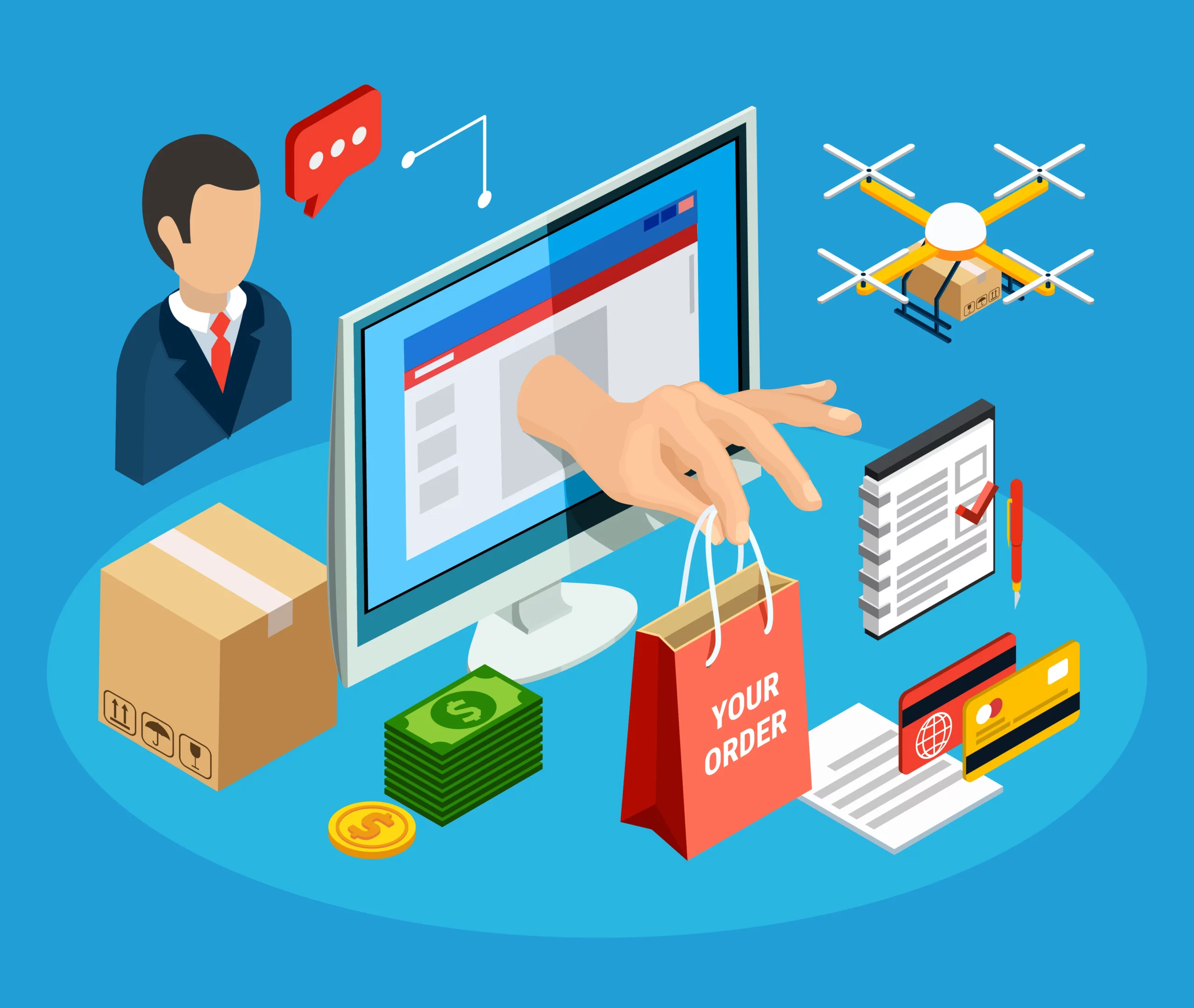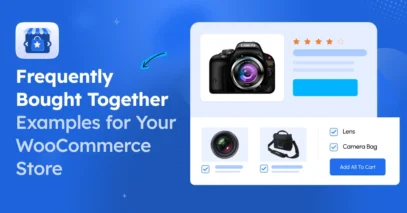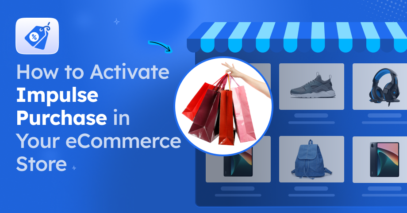Running an ecommerce business is exciting—until you realize how much time gets eaten up by manual work.
Managing inventory, updating product listings, sending emails, tracking orders… it never ends. The more you grow, the more chaotic it gets. You start spending more time on tasks you never signed up for and less time actually growing your business.
But what if you didn’t have to do it all yourself? – Yes, ecommerce automation does these all for you.
In fact, the demand for automation is growing fast—revenue of marketing automation solution vendors is forecasted to reach $6.6 billion by 2026 (up from $2.9 billion in 2020) – Frost & Sullivan.
It’s not about replacing your work—it’s about removing the repetitive, time-consuming tasks so you can focus on scaling your store, increasing sales, and delivering a seamless shopping experience.
In this guide, i’ll break down what is ecommerce automation, how it works, and the key areas where it can help you save time, cut costs, and grow your revenue—without adding more to your plate.
Let’s dive in.
What Is Ecommerce Automation?
Ecommerce automation is the process of using software and technology to handle repetitive tasks in your online store without manual effort.

Instead of managing every task manually—like sending order confirmations, updating inventory, or responding to customer inquiries—automation does it for you.
For example, imagine you run an online clothing store. A customer places an order for a hoodie. Without automation, you’d have to manually confirm the order, process the payment, update inventory, and send a shipping confirmation. That’s time-consuming and prone to mistakes. But with automation, the system can instantly process the payment, update stock levels, send a confirmation email, and even generate a shipping label—all without you lifting a finger.
This means faster order fulfillment, fewer errors, and a smoother experience for both you and your customers.
How Does Ecommerce Automation Work?
Once you’ve set up automation, your store can handle tasks with minimal effort from you. Instead of doing everything manually, automation follows a set of predefined rules and actions to complete tasks instantly. Here’s how it works:
- Rule-Based Workflows: You set up conditions and triggers for specific tasks. For example, if a customer abandons their cart, the system can automatically send a follow-up email with a discount to encourage them to complete the purchase.
- AI-Driven Decisions: Some automation tools use artificial intelligence to analyze customer behavior and predict their needs. For example, if a customer frequently buys skincare products, the system can recommend new arrivals based on their past purchases.
- Third-Party Integrations: Automation connects different tools like your ecommerce platform, email marketing software, and inventory management system. When a sale is made, these tools communicate to update stock levels, generate invoices, and trigger shipping notifications. You can also use computer inventory software to ensure accurate stock tracking, avoid overselling, and streamline order fulfillment.
With ecommerce automation, you can eliminate repetitive tasks, reduce human errors, and create a better shopping experience. You can also apply cloud cost optimization strategies to manage your online store more efficiently. Instead of spending hours on manual work, you can focus on growing your business while automation takes care of the rest.
Key Areas Where Ecommerce Automation Saves Time & Increases Sales
Once you start automating the repetitive stuff, things just flow better. You don’t have to worry about overselling, missed follow-ups, or slow shipping updates. Everything happens in the background while you focus on growing your business.
Let’s look at some key areas where you can bring automation and save time.
i. Inventory and Product Listing Automation
Managing inventory across multiple platforms can get messy fast.
Let’s say you sell sneakers on your website, Amazon, eBay, and Etsy. If someone buys a pair on one platform, but your stock doesn’t update everywhere else, you might end up selling something that’s already out of stock. That leads to cancellations, refunds, and frustrated customers.
With inventory automation, that’s not a problem. The moment an item sells, your stock updates across all platforms in real time. No manual tracking, no overselling—just accurate inventory, always.
It also makes product updates easier. Instead of adjusting prices or descriptions on every platform one by one, automation lets you change them once, and they update everywhere. That means less time spent on repetitive tasks and fewer chances for mistakes.
ii. Automated Abandoned Cart Recovery
Now, as we’ve seen, automating inventory and product listings can help streamline your operations. But another area where ecommerce automation can really make a difference is with abandoned carts.
Let’s say a potential customer browses your store, adds a few items to their cart, and then abandons it before checking out. Normally, you’d miss that opportunity, right? But with automation, you don’t have to. The system will automatically send a personalized email or even an SMS to remind them about the items they left behind.
This isn’t just any generic email—it’s tailored to remind them of the specific products they were looking at. Sometimes, you might even offer a discount to entice them to complete the purchase.
By automating this process, you can recover sales without lifting a finger.
iii. Order Processing and Fulfillment Automation
Next up is automating order processing and fulfillment. After a customer places an order, there’s a lot that happens behind the scenes—order confirmation, creating shipping labels, updating inventory, and sending tracking information. These tasks can quickly become overwhelming, especially as your business grows.
With automation in place, all of this is taken care of for you.
For example, when an order is placed, the system automatically sends a confirmation email to the customer. It then generates shipping labels, updates your stock levels, and even sends out tracking information as soon as the order ships.
If you’re using fulfillment centers, automation integrates with them as well, ensuring that orders are processed and shipped quickly.
So, whether you’re fulfilling orders yourself or through a third party, everything runs smoothly without requiring your direct involvement.
iv. Personalized Marketing and Customer Engagement
Moving on from order processing, let’s talk about personalized marketing and how eCommerce automation plays a huge role in making your customer interactions more targeted and effective.
Imagine this: a customer buys a pair of sneakers from your store. With automation, you can now send personalized product recommendations based on their past purchases. It’s like having a personal shopper for every customer, but without doing the work yourself. You can set up automated emails or even SMS to suggest new items, updates, or complementary products, keeping your brand at the top of their mind.
And it’s not just about sending product suggestions. You can also automate discounts and loyalty rewards.
For example, a customer who’s been shopping with you for a while might automatically get a discount offer once they hit a certain threshold. Or, with an automated loyalty program, they could get points for every purchase they make, encouraging them to return.
**Read this blog if you are willing to explore more ways you can pitch discounts.
This kind of automation keeps your customers engaged, makes them feel valued, and encourages repeat purchases—all without you having to manually track or reward them. Utilizing CRM project management will help you track customer interactions and send more personalized automated messages.
v. Dynamic Pricing and Discount Rules
Let’s move on to dynamic pricing and discounts, which can be game-changers for boosting your sales. With automation, you can adjust your prices in real time based on factors like demand, competitor pricing, or your current stock levels.

For instance, if you’re running low on a product, automation can automatically increase the price to maximize your profits before it runs out. On the flip side, if demand is low, the system can trigger a discount to move inventory. You can also automate time-sensitive discounts to create urgency—whether it’s a flash sale, end-of-season clearance, or a special offer for loyal customers.
This approach ensures that your pricing is always competitive and reflects the market, giving you the flexibility to respond to changes without manually adjusting every product. It also helps you capitalize on sales opportunities, drive urgency, and make sure customers feel like they’re getting the best deal.
vi. eCommerce Automation for Post Purchase Offers
Now let’s talk about post-purchase offers. After a customer has made a purchase, the transaction doesn’t have to end there. With automation, you can continue to drive sales by offering relevant products or discounts after the initial sale.
For example, once a customer buys a new phone, automation can trigger an email offering them accessories like a phone case, headphones, or a screen protector. Or, if they purchased an item from a seasonal collection, you can automatically offer them discounts on future purchases or exclusive early access to new collections.
This kind of automation ensures you never miss an opportunity to encourage more sales, and it keeps your customers engaged with personalized offers that match their interests. Plus, it’s all automated, so you can scale without extra effort.
vii. Subscription and Recurring Orders Automation
Next, let’s look at subscription and recurring order automation, which is a great way to keep revenue coming in regularly without the constant need for manual input.
If you’re running a subscription-based model, automation can take a huge weight off your shoulders.
For example, customers can automatically receive their favorite products at set intervals, whether it’s a monthly coffee subscription or a skincare regimen delivered every two months. Automation handles the billing process, renewal reminders, and even updates for customers who want to make changes to their subscriptions.
This creates a smoother experience for both you and your customers.
Additionally, automation helps personalize these subscriptions by offering relevant product recommendations based on what customers have ordered before. If someone frequently buys certain items, automation can suggest new products or exclusive offers based on their purchase history, keeping them engaged and more likely to stick around.
viii. Fraud Detection and Risk Management
Finally, fraud detection and risk management are critical in any eCommerce store, and automation plays a key role in minimizing those risks.

With automation, suspicious transactions can be flagged immediately, preventing potential fraudulent purchases before they go through.
For instance, if an order shows signs of being high-risk—like an unusual shipping address or a sudden change in purchasing behavior—the system can automatically pause or flag the transaction for review.
This helps protect your store from chargebacks and lost revenue.
Automation also helps with AI-driven fraud detection. This allows the system to learn patterns and continuously improve at identifying fraud, reducing the chances of false positives and making your business more secure over time.
The result? Less manual intervention and more protection for your revenue.
Benefits of Ecommerce Automation for Business Growth
As I’ve explored how automation can streamline your processes, it’s clear that its benefits extend well beyond efficiency.
Here’s how ecommerce automation directly contributes to business growth.
i. Saves Time & Reduces Manual Work
Automation takes care of repetitive tasks like inventory updates, order processing, and email campaigns. This means you’ll spend less time on manual tasks and more time on strategic activities that help your business grow, such as improving marketing efforts and product expansion.
ii. Increases Conversion Rates & Revenue
With automation, you can recover abandoned carts with timely reminders, send personalized offers, and adjust pricing based on demand and competition. This leads to higher conversion rates and more revenue from each customer interaction.
iii. Minimizes Human Errors & Improves Accuracy
Automating tasks like inventory updates and order fulfillment removes the risk of human errors. Your stock levels, pricing, and order details will stay accurate, reducing mistakes that could result in customer dissatisfaction and lost sales.
iv. Enhances Customer Experience
Automation improves customer experience with instant support, real-time order updates, and personalized offers. By staying engaged with your customers through these automated touchpoints, you create a smoother, more personalized shopping experience that encourages repeat purchases.
v. Scales Your Business Without Additional Costs
With automation, you can handle more orders and customers without needing to hire extra staff. Whether you’re processing more orders or updating more listings, automation allows you to scale efficiently without adding to your overhead costs.
How to Get Started with Ecommerce Automation
So, you now understand the key benefits of ecommerce automation and it’s time to get started. The process is easy, and by following a few simple steps, you can begin shaping your business operations quickly.
i. Identify Your Business’s Pain Points
First thing first, pinpoint the tasks that are taking up the most time and effort. Look at areas where errors tend to happen or where processes feel repetitive.

For example, if you’re manually updating inventory every time a sale happens, that’s a clear task to automate.
Once you identify these pain points, you’ll have a clear idea of what to automate first that will help you save time and reduce errors from the get-go.
ii. Choose the Right Automation Tools
Now that you know where to focus, it’s time to choose the right tools for automation. Picking the right Ecommerce automation tools depends on your business size, needs, and budget. A small business with a few products won’t need the same setup as a large ecommerce store handling thousands of daily orders.
Below are some of the best tools for key automation areas:
1. Inventory and Product Listing Automation
- PFM (Product Feed Manager) – Automates product listing across Google Shopping, Facebook, and other marketplaces.
- Cin7 – Manages inventory, automates stock updates, and syncs across multiple sales channels.
2. Automated Abandoned Cart Recovery
- Cart Lift – Sends automated abandoned cart emails and retargeting messages to recover lost sales.
- CartStack – Tracks abandoned carts and retargets potential customers.
3. Order Processing and Fulfillment Automation
- ShipStation – Automates order fulfillment, shipping label creation, and tracking updates.
- ShipBob – Handles warehouse management, order packing, and fast shipping.
4. Personalized Marketing and Customer Engagement
- Mail Mint – Automates email marketing, customer segmentation, and behavioral targeting.
- Omnisend – Provides automated SMS, email, and push notifications for personalized engagement.
5. Dynamic Pricing and Discount Rules
- Prisync – Adjusts pricing based on competitors and demand in real time.
- Dynamic Discount for WooCommerce – Automates bulk pricing, special offers, and discounts.
6. eCommerce Automation for Post-Purchase Offers
- ReConvert – Adds post-purchase upsells and cross-sells to increase order value.
- One Click Upsell by Zipify – Automates one-click upsell offers for higher revenue.
7. Subscription and Recurring Orders Automation
- Recharge – Automates recurring billing, order renewals, and subscription management.
8. Fraud Detection and Risk Management
- Signifyd – Uses AI to flag suspicious transactions and prevent fraud.
- Riskified – Reduces chargebacks and verifies transactions automatically.
By using these tools, you can automate key processes, reduce manual work, and improve efficiency—all while saving time and increasing revenue.
iii. Set Up Automation Workflows and Integrations
Once you’ve picked your tools, it’s time to set them up. Begin by automating your most crucial workflows, such as product listing, abandoned cart recovery, and order processing.
For instance, if you’re using PFM (Product Feed Manager), you can automate product listings across Google Shopping and Facebook so that any price or stock update reflects instantly without manual work. Similarly, Cart Lift can automatically send follow-up emails to customers who left items in their cart, reminding them to complete their purchase.
By connecting your tools and setting up workflows, you’ll have more control with less manual input.
iv. Monitor, Test, and Optimize
Finally, automation isn’t something you set up once and forget. To keep it working effectively, you need to check in regularly and make improvements where needed.
Keep an eye on key metrics like how many abandoned carts get recovered, how accurate your inventory updates are, or how well your marketing emails are performing.
If you notice that abandoned cart emails aren’t bringing people back, adjusting the timing or message might help. If inventory updates are lagging, a quick fix in your integration settings could solve the issue.
Small tweaks over time make a big difference. By testing and optimizing regularly, you ensure that automation keeps running smoothly and continues to support your business as it grows.
The Future of Ecommerce Automation in 2025 & Beyond
As automation continues to improve, the future of ecommerce is becoming even more exciting. AI-powered tools will handle more tasks, helping you save time and improve customer experience.
Chatbots will do more than just answer basic questions. They’ll assist with orders, recommend products, and offer support—reducing the need for human involvement while keeping customers happy.
Voice shopping is also growing. More people are using smart speakers to place orders, so businesses that adapt will have an edge. Making your store voice-search-friendly can help you stay ahead.
Predictive analytics will take the guesswork out of sales. Instead of reacting to trends, you’ll be able to adjust prices, send personalized offers, and manage inventory based on real customer behavior.
Ecommerce is moving fast, and automation will help you keep up. The more you optimize, the smoother your business will run—and the more sales you’ll make.
FAQs
What are some common ways to save time in an online store?
Ecommerce automation examples include automated order processing, inventory updates, abandoned cart recovery, and personalized email campaigns.
How can automation help scale an online business?
An automated ecommerce business handles repetitive tasks like product listing updates and customer follow-ups, letting you focus on growth.
What tools are used to automate ecommerce operations?
Popular ecommerce automation examples include Mail Mint for email workflows, PFM for product listing automation, and Cart Lift for cart recovery.
Can a store run without constant manual management?
With the right setup, an automated ecommerce business can process orders, update inventory, and send marketing emails without daily oversight.
How do businesses increase sales with automation?
Ecommerce automation examples like dynamic pricing, AI-driven recommendations, and automated post-purchase offers help boost conversions.






![How Ecommerce Automation Can Save Time and Boost Your Sales [2025]](https://rextheme.com/wp-content/uploads/2025/03/Ecommerce-Automation.webp)


